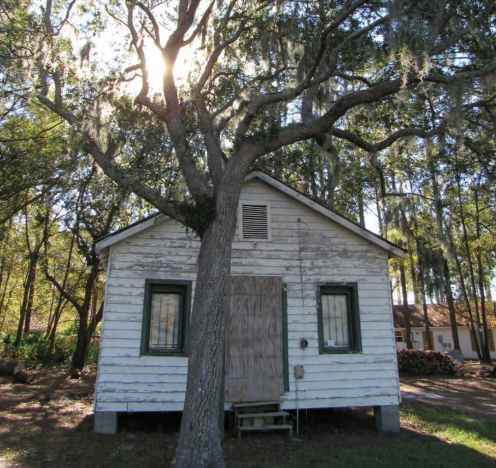Praise houses of Bluffton

There are three remaining praise houses in Bluffton. One lies on Simmonsville Road, another behind the privately owned Cordray House on the corner of Calhoun Street and May River Road and the third in the space now occupied by Jacob Preston Pottery on Church Street.
“Since we have three in Bluffton, we realized they have an important place in our history,” noted Joanie.
“Praise houses were the center of African American community life and worship during the plantation era and well into the 20th century,” explains the Celebrate Bluffton website. “The praise house tradition began in the dark days of slavery, when African Americans were not permitted to travel or even gather together. Praise houses gave them a place to worship—and meet—on the plantation. Within the walls of tiny praise houses, enslaved African Americans would hold religious services, share news and settle disputes.”
A place where Christianity and non-liturgical African religion converged, these simple, sparse clapboard structures often held dozens.
Attendants extolled Jesus through ring shouts and call-and-response sermons—without the benefit of instruments or hymnals.
With origins in indigenous Central and West Africa dance traditions, the ring shout had congregants shuffling slowly, at first, in a counterclockwise circle while simultaneously clapping, tapping their feet, singing or praying as a “stick man” beat a simple, gradually accelerating, rhythm on the floor, transforming the simple dance into a jubilant, transcendent religious ritual.
The praise house on Simmonsville Road near the intersection of the Bluffton Parkway was originally located a mile away in Belfair Plantation and is over 100 years old.
In the early 1950s, a volunteer group moved the praise house to its present location. Residents from various congregations who couldn’t make it into town for services at the “church” used it. It held services on Wednesday and Friday evenings and Sunday mornings.
The praise house tradition eventually ended, once people could drive to bigger churches located further from their homes.
As per the 1860 Census, Isaac H. Martin lived in the block bounded by May River Road, Calhoun Street, Boundary Street and Church Street. Federal troops burned the house in 1863. The property had been divided into several lots, including the site of the Cordray House. Bluffton’s last remaining Praise House sits on private property.
The Old Town Bluffton‘s Tabernacle Baptist congregation on Church Street functioned until around 1935.
This structure, described as an “Artifact of Poverty,” uses recycled parts from other buildings, including the tin roof.
According to Celebrate Bluffton, “Praise Houses were the core of African American life in the early years of Bluffton. The joyful spirit and sense of community continues to be an inspirational touchstone for African Americans today.”
By Allyson Jones


